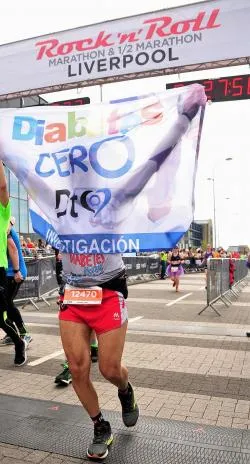The human body needs insulin so that glucose from food and that has entered the bloodstream can access our body's cells (mainly muscle and liver cells) and is used as a source of energy.
Without enough insulin, the body cannot use this blood glucose as a source of energy.That is why the body breaks down its own fat to obtain energy, forming a waste substance - ketone or ketones - which is toxic to the human body.
When ketone bodies - which are an acidic substance - increase in quantity by perpetuating the situation, the acidity of the blood can increase and a potentially serious clinical situation known as diabetic ketoacidosis.
Why are the ketone bodies?
The formation of ketone bodies in children with diabetes is practically exclusive to type 1 diabetes. It occurs when there is an absence of insulin or a relative deficiency of it in relation to needs.These needs may be influenced by situations such as concomitant diseases or stress that increase these requirements due to the production of counterinsular hormones (cortisol, adrenaline, glucagon, ...).
Therefore, the most common situations that can generate situations of ketosis are the lower injection of the amount of insulin that the body requires, omission of insulin doses or concomitant diseases or infections.
In the case of patients in insulin infuses the disconnection for more than 30 minutes of the infusion set or the obstruction of the cannula can quickly generate the appearance of ketone bodies.
What symptoms can exist in ketosis/ketoacidosis situations?
Initially the symptoms of hyperglycemia (polyuria, polydipsia, polyphia) will appear.Subsequently, the child can present a breath of apple (smell of ketones), abdominal pain, nausea, vomiting and general discomfort.
If it is not corrected, the situation can progress to a more serious way (ketoacidosis).In this case, the child with diabetes presents dehydration (dry skin and mucousness), respiratory distress (with deep and fast breathing) and tendency to drowsiness.In this situation, the child must be urgently transferred to a hospital.
How can ketone bodies be measured?
They can be measured in both urine and blood.Classically, ketone bodies were measured through urine strips that allowed the estimation of the number of ketone bodies through color.In recent years, meters who give a more accurate quantitative measurement of the ketone bodies have appeared.
Cetosis level classification according to blood measurement:
- Normal (less than 0.5 mmol/l)
- Abnormal.Mild ketosis (0.6-0.9 mmol/l)
-Mild-moderate ketosis (1-2 mmol/l)
- Moderate ketosis (more than 2 mmol/l)
- Important ketosis (more than 3mmol/l)
When the measurement of blood ketone bodies exceeds 3 mmol/l the risk of a picture of ketoacidosis is high.
What to do in case of appearance of ketone bodies?
Avoid dehydration, it is important to drink liquid (sugarless drinks).
Insulin administration.It will be necessary to administer additional insulin.The recommendations of the International Pediatric and Adolescent Diabetes Society (ISPAD) advise administering a corrective insulin dose that oscillates around 15-20% of the total daily dose in case of ketosis.In any case, it is important to follow the indications that your diabetes team has provided to correct this situation.It is important to remember that in situations of illness theInsulin administration.
Carbohydrate administration.When the insulin corrective dose has been administered and blood glucose begins to be low.
Frequently measure blood sugar levels and blood or urine ketones.
If the appearance of ketone bodies is related to the appearance of a base disease, it is important to treat the disease that is predisposing to this situation.
Monitor the appearance of signs of ketoacidosis.
How to handle sports situations and ketone bodies?
During the realization of a sports activity, glucose consumption increases.However, as we have previously explained, it is important to have a sufficient level of insulin that allows the combustion of this glucose.
If there was not enough insulin, the body is unable to use glucose as a source of energy and will begin to use fats, appearing the ketone bodies as a result of this combustion.
In this way, high blood glucose (above 250-290 mg/dl) with a positive ketone test translates that the body does not have a sufficient amount of insulin to carry out a sports activity.
It will be necessary in this case to administer insulin and expect ketones to disappear before starting the activity since otherwise the risk of the situation progressing to ketoacidosis can be important.
By: Roque Cardona
Pediatric Diabetes Advisor of the Diabetes Foundation.Pediatric endocrinologist with preferential dedication to diabetes at the Sant Joan de Déu hospital in Barcelona.


